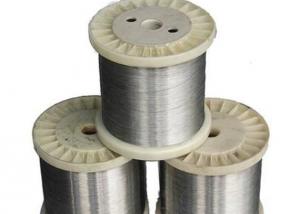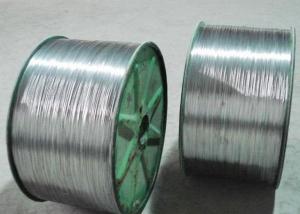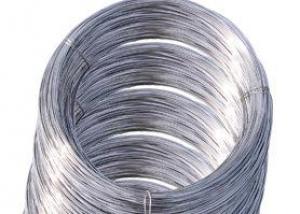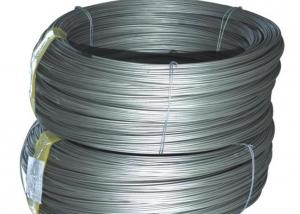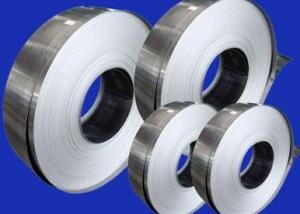430 Stainless Steel Wire
- Loading Port:
- China Main Port
- Payment Terms:
- TT or LC
- Min Order Qty:
- 1 Ton m.t.
- Supply Capability:
- 2000 Tons Per Month m.t./month
OKorder Service Pledge
OKorder Financial Service
You Might Also Like
Stainless Steel Wire
1.Grade: SS 200,300,400 series
2.Dia: 0.1mm-100mm
3.Length:500m-2000m/Reel
4.Surface: Bright
5.Certificate: Fortune 500, SGS, ISO 9001:2008
6.Test: Salt Spray over200 hours
7.MOQ:500kg
8.Delivery: Within 20 days
9.Packing: Reel, wooden box or according to your requirement
10.Payment terms: China Main Port or CIF ANY PORT
11. Application: Tie wire, pins, lashing, forming wire, filters, gaskets, elevators, safety wire, shaped and flat wire, conveyors, jewelry, springs, brush welding, electrical, wire line, craft and many more applications.
|
Main Grades |
C % |
Si % |
S % |
P % |
Mn % |
Cr % |
Ni % |
Mo % |
Cu % |
|
S30400 |
<0.08 |
<0.75 |
<0.015 |
<0.045 |
<2 |
18.05-19 |
8.01--8.25 |
<0.6 | |
|
304H |
0.04-0.1 |
<0.75 |
<0.015 |
<0.045 |
<2 |
18.05-19 |
8.01--8.25 |
<0.5 | |
|
304Hc1 |
0.03-0.05 |
<0.75 |
<0.015 |
<0.045 |
<2 |
18.05-19 |
8.01-8.25 |
1.2-1.6 | |
|
304Hc |
0.03-0.05 |
<0.75 |
<0.015 |
<0.045 |
<2 |
18.05-19 |
8.01--8.25 |
2-3 | |
|
304Hc3 |
0.03-0.05 |
<0.75 |
<0.015 |
<0.045 |
<2 |
18.05-19 |
8.01--8.25 |
3-3.5 | |
|
304ES |
<0.08 |
<0.75 |
<0.015 |
<0.045 |
2-3 |
16.05-17 |
6.01-6.3 |
1.5-3 | |
|
304M2 |
0.05-0.08 |
<0.75 |
<0.015 |
<0.045 |
2-3 |
18-18.5 |
7-8.1 |
<0.6 | |
|
304M3 |
0.05-0.08 |
<0.75 |
<0.015 |
<0.045 |
2-3 |
18-18.5 |
8.01-8.25 |
<0.6 | |
|
304L |
<0.035 |
<0.75 |
<0.015 |
<0.045 |
<2 |
18.05-19 |
8.01--8.25 |
<0.6 | |
|
321 |
0.04-0.08 |
<0.75 |
<0.015 |
<0.045 |
<2 |
17-18 |
8.01--8.25 |
||
|
316L |
<0.035 |
<0.75 |
<0.015 |
<0.045 |
<2 |
16.05-17 |
10.01--10.35 |
2.01-2.2 |
<1 |
|
316 |
0.04-0.08 |
<0.75 |
<0.015 |
<0.045 |
<2 |
16.05-17 |
10.01--10.35 |
2.01-2.2 |
<1 |
|
316LCu |
<0.035 |
<0.75 |
<0.05 |
<0.045 |
<2 |
16-17 |
10-10.5 |
2-2.25 |
|
|
ER316L |
<0.04 |
0.65 |
<0.03 |
<0.04 |
1.0-2.5 |
18-20 |
11.1-12 |
||
|
201CU |
<0.08 |
<0.75 |
<0.015 |
<0.045 |
8-9.5 |
13.05-14 |
4.01-4.25 |
2-3 | |
|
D667 |
<0.08 |
<0.75 |
<0.015 |
<0.045 |
13-14 |
13-14 |
0.7-1.5 |
1.5-3 | |
|
D665B |
<0.08 |
<0.75 |
<0.015 |
<0.045 |
14-16 |
10.05-11 |
<1.2 |
0.5--1.5 | |
|
202B |
0.1-0.15 |
<0.75 |
<0.015 |
<0.045 |
9-10 |
17.05-18 |
4.5-5 |
||
|
D669 |
0.08-1.0 |
<0.75 |
<0.015 |
<0.045 |
14.5-16 |
11-12 |
<1.2 |
0.5-1.5 | |
|
200CU |
<0.08 |
<0.75 |
<0.015 |
<0.045 |
11-12 |
13-14 |
1-2 |
1.5-2.5 |
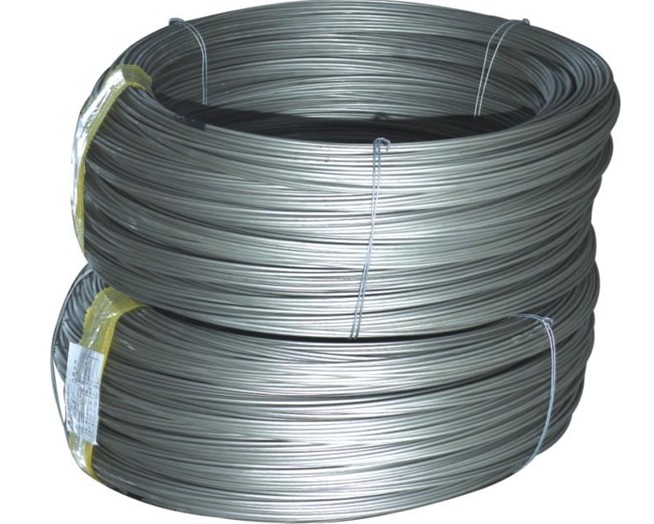
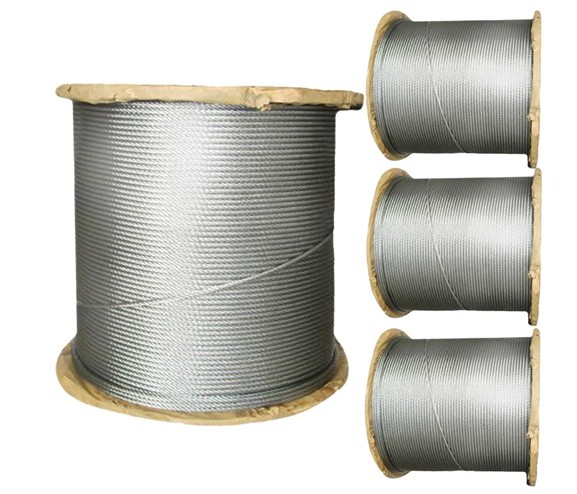
- Q:202 stainless steel wire can pass 200 hours salt mist test?
- Stainless steel passivation liquid has a strong advantage:First, the passivation does not change any size and color of the workpiece, effectively protect the beautiful appearance and accuracy of the workpiece.Two, the use of low cost, liquid drugs can be reused, the realization of material rust grade by sub strong (201 change 304, 304 change 316) Enhance the added value of products and effectively reduce the cost of enterprises.Three, after passivation, corrosion resistance is strong, 201 series of materials through more than 48 hours, 304 series of materials 200~1500 hours, salt fog test.Four, simple operation, stainless steel passivation liquid performance is stable, only need to soak at room temperature.
- Q:Can stainless steel wire mesh be used for insect screens?
- Yes, stainless steel wire mesh can be used for insect screens. Stainless steel wire mesh is known for its durability, strength, and resistance to corrosion, making it an ideal material for insect screens. It can effectively keep out insects and pests while allowing air and sunlight to pass through. Additionally, stainless steel wire mesh is easy to clean and maintain, making it a popular choice for insect screens in residential and commercial applications.
- Q:How flexible is stainless steel wire?
- Stainless steel wire is known for its exceptional flexibility. It can be easily bent, twisted, and shaped without breaking or losing its structural integrity. Its flexibility allows it to be used in a wide range of applications, from jewelry making to electrical wiring, making it a highly versatile material.
- Q:How does the diameter of stainless steel wire affect its strength?
- The diameter of stainless steel wire has a direct impact on its strength. Generally, as the diameter of the wire increases, its strength also increases. This is due to the increased cross-sectional area of the wire, which allows for a greater distribution of load and resistance to deformation or breaking. When the diameter of the stainless steel wire is larger, it can withstand higher levels of tension or compression without experiencing failure. This makes it suitable for applications that require greater strength, such as in construction, engineering, or manufacturing industries. On the other hand, if the diameter of the stainless steel wire is smaller, its strength decreases. Thinner wires have a smaller cross-sectional area, which means they have less material to distribute the load and are more prone to deformation or breaking under stress. However, thinner wires may be preferred for applications that require flexibility or where a lower tensile strength is sufficient. It is important to note that the specific grade or alloy of stainless steel wire also affects its strength. Different alloys have varying mechanical properties, including strength, so it is crucial to consider the specific requirements of the application when selecting the appropriate wire diameter and material.
- Q:What are the different types of stainless steel wire rope tensioners?
- On the market today, one can find a variety of stainless steel wire rope tensioners. These tensioners serve the purpose of securely anchoring and tensioning wire ropes in different applications. One prevailing type of stainless steel wire rope tensioner is the turnbuckle tensioner. This tensioner consists of a body with threaded ends on opposite sides, allowing for rotational adjustment of the wire rope tension. It finds common usage in construction, marine, and industrial settings. Another variation is the swage tensioner. This type of tensioner is specifically designed to be crimped onto the wire rope, providing a permanent and secure tensioning solution. Swage tensioners are often used in architectural and structural applications where visual appeal is important. Wire rope grippers represent yet another type of stainless steel tensioner. These tensioners employ a clamping mechanism to grip the wire rope, making adjustment and tensioning a simple task. They are commonly utilized in cable railing systems and suspension applications. Cable tensioners also prove to be a popular choice for tensioning stainless steel wire ropes. These tensioners typically consist of a housing with a mechanism that allows for easy tension adjustment. They are commonly found in overhead cable support systems and rigging applications. Lastly, for larger and more heavy-duty wire rope tensioning applications, hydraulic tensioners are available. These tensioners rely on hydraulic pressure to achieve and sustain the desired tension in the wire rope. They are commonly utilized in applications such as bridge construction and heavy lifting. In conclusion, the assortment of stainless steel wire rope tensioners available on the market offers a wide range of options to suit diverse applications and requirements. Whether it be turnbuckles, swage tensioners, grippers, or hydraulic tensioners, there is a suitable tensioning solution available for nearly any wire rope application.
- Q:Can stainless steel wire be used for electrical applications?
- Certainly, electrical applications can utilize stainless steel wire. Stainless steel exhibits outstanding electrical conductivity and is frequently employed in electrical wiring, particularly in scenarios necessitating corrosion resistance. It finds common usage in the fabrication of electrical equipment, appliances, heating elements, and diverse electrical components. Moreover, the power generation, telecommunications, and automotive industries frequently employ stainless steel wire due to its durability, exceptional strength, and ability to withstand harsh environments. Furthermore, stainless steel wire is frequently employed in grounding applications due to its effective dissipation of electrical charges.
- Q:Does stainless steel wire have any magnetic properties?
- Indeed, magnetic properties can be found in stainless steel wire. Nevertheless, the degree of magnetism may differ depending on the specific composition of the stainless steel. Stainless steel is an alloy primarily composed of iron, along with the inclusion of different elements like chromium, nickel, and manganese. The presence of these alloying elements influences the magnetic behavior of stainless steel. Generally, stainless steel is regarded as having modest magnetic properties, implying it is not strongly drawn to magnets. However, particular forms of stainless steel, particularly those containing a greater proportion of ferrite or martensite, can display more noticeable magnetic properties.
- Q:Does stainless steel wire require any special tools for handling?
- Indeed, special tools are essential when it comes to handling stainless steel wire. Given its remarkable strength and durability, regular tools are insufficient for cutting or manipulating stainless steel wire. To handle this wire effectively, one must employ specialized tools like wire cutters, pliers, and crimpers. These tools are specifically designed to offer a secure grip and execute clean, precise cuts without causing any harm to the wire. Moreover, bending, shaping, and attaching stainless steel wire to different structures or objects may also necessitate the use of distinct tools. To guarantee safety and accomplish desired outcomes, it is crucial to utilize the appropriate tools when working with stainless steel wire.
- Q:Can stainless steel and nickel titanium wire be welded together?
- Then the rest is the way to the welder, welding carbon steel, stainless steel used techniques have to practice the nickel nickel welding material, after all.
- Q:Can stainless steel wire be used for filtration applications?
- Indeed, filtration applications can utilize stainless steel wire. This material, known for its durability and resistance to corrosion, proves highly suitable for diverse filtration procedures. Particularly in industrial environments, stainless steel wire is commonly employed to filter liquids, gases, and particles. To attain desired filtration efficiency, the wire can be woven into various mesh sizes and shapes. Furthermore, it is possible to enhance the wire's filtration properties by coating or treating it with different substances, thereby improving its resistance to high temperatures or chemical reactions. Ultimately, stainless steel wire serves as a versatile solution capable of effectively meeting the filtration requirements of various industries.
1. Manufacturer Overview |
|
|---|---|
| Location | Hebei,China |
| Year Established | 1989 |
| Annual Output Value | Above US$160 Thousand |
| Main Markets | Europe, East Asia and Southeast Asia |
| Company Certifications | ISO9001:2000; |
2. Manufacturer Certificates |
|
|---|---|
| a) Certification Name | |
| Range | |
| Reference | |
| Validity Period | |
3. Manufacturer Capability |
|
|---|---|
| a)Trade Capacity | |
| Nearest Port | Tianjin |
| Export Percentage | 70% |
| No.of Employees in Trade Department | 30 People |
| Language Spoken: | English;Chinese |
| b)Factory Information | |
| Factory Size: | Above 14,500 square meters |
| No. of Production Lines | Above 6 |
| Contract Manufacturing | OEM Service Offered;Design Service Offered |
| Product Price Range | Average |
Send your message to us
430 Stainless Steel Wire
- Loading Port:
- China Main Port
- Payment Terms:
- TT or LC
- Min Order Qty:
- 1 Ton m.t.
- Supply Capability:
- 2000 Tons Per Month m.t./month
OKorder Service Pledge
OKorder Financial Service
Similar products
New products
Hot products
Hot Searches
Related keywords

